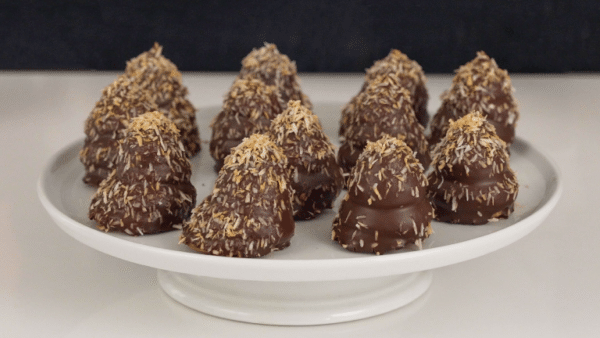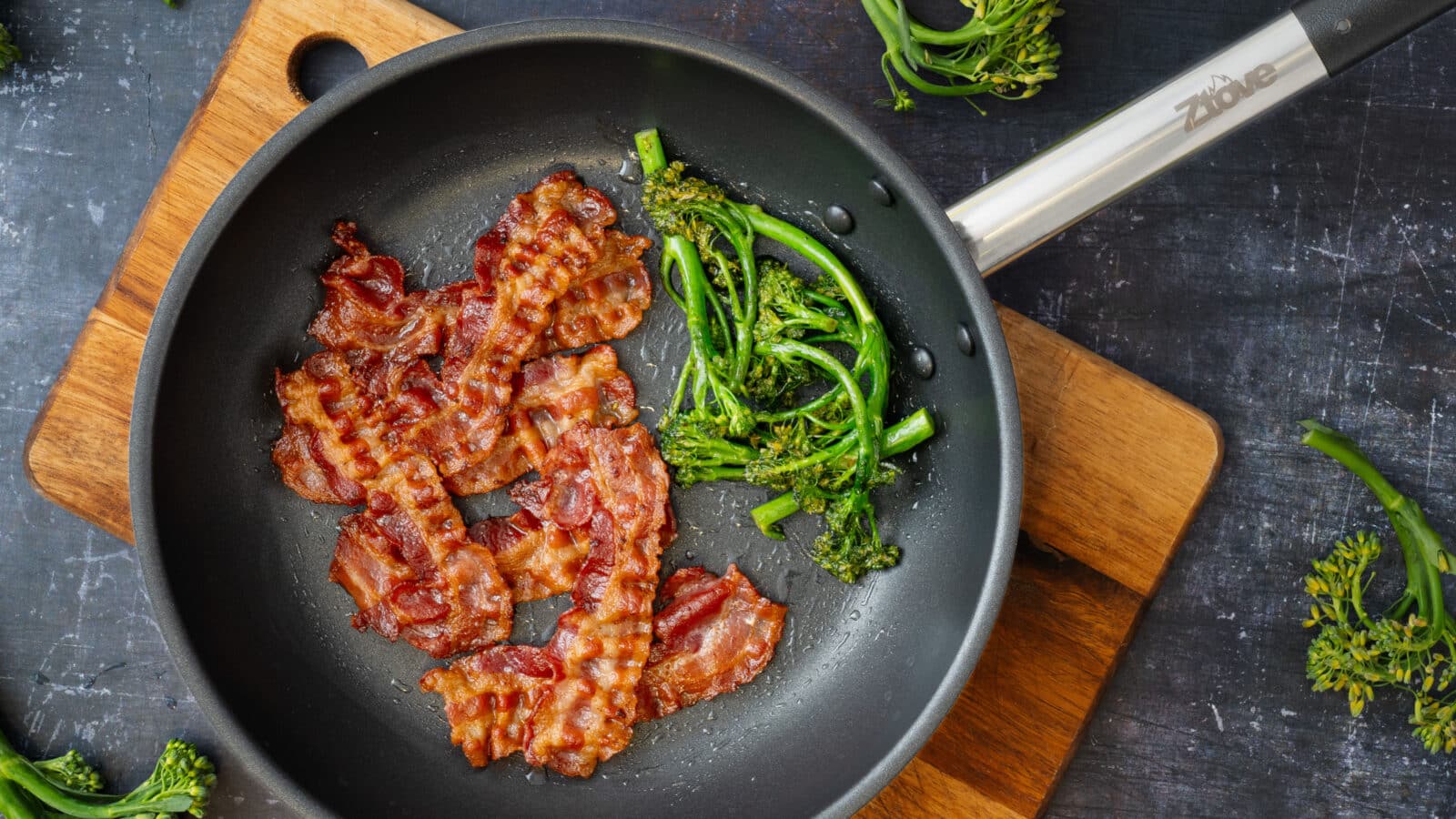What is chocolate made of?
Chocolate is crafted from cocoa beans that undergo fermentation, drying, roasting, and grinding. The processed cocoa beans are then combined with sugar to transform them into the chocolate we know and love.
Chocolate comes in a multitude of forms and flavours and is primarily used in sweet treats like desserts, cakes, and confectionery.
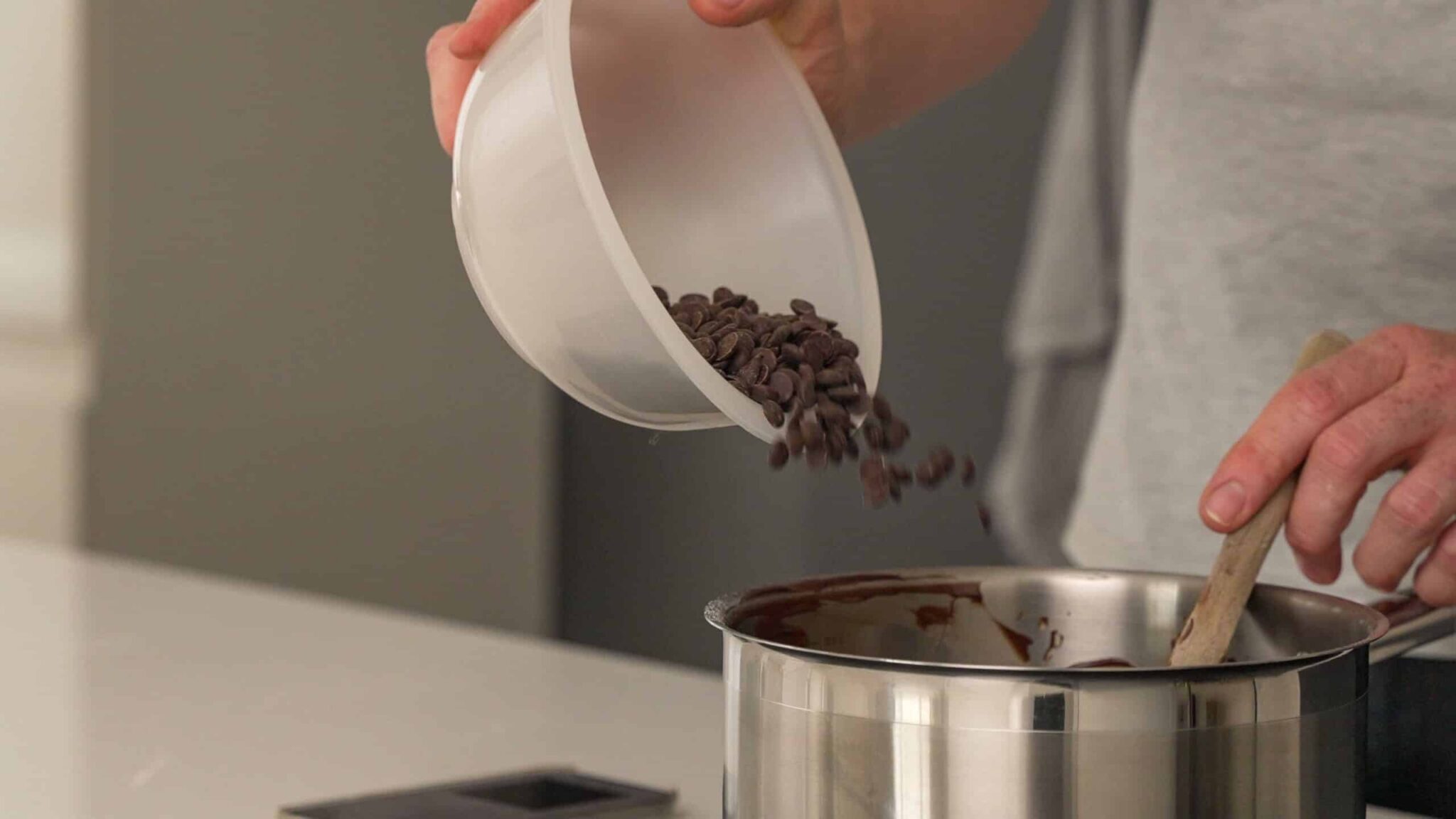
Why is tempering chocolate important?
You might have come across the term “tempering chocolate”. This is a necessary step, when melting chocolate for chocolate decorations, molded chocolates, or chocolate coating e.g. for chocolate truffles.
When you temper chocolate, you control the formation of crystals within the chocolate. Achieving the desired stable chocolate crystals (β-crystals, phase V) is crucial, as they have a higher melting point, allowing the chocolate to retain its shape at room temperature.
Furthermore, these crystals assure that the chocolate has a glossy appearance and a satisfying snap. Untempered chocolate tends to have a soft consistency, loses its shine, and can develop white spots on the surface.
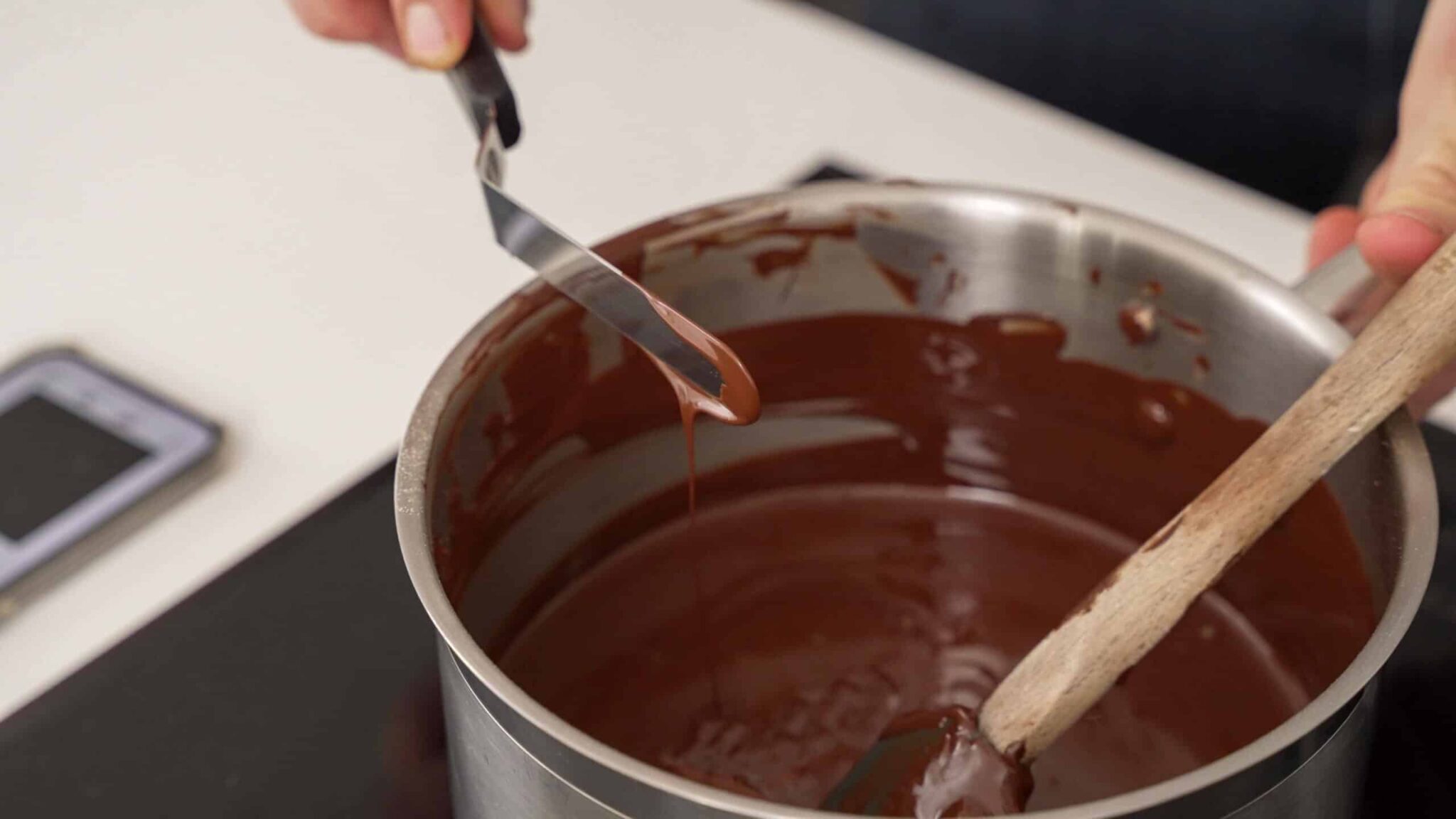
What are the recommended tempering temperatures for chocolate?
The classic varieties of chocolate include dark chocolate, milk chocolate, and white chocolate. As each contains different amounts of cocoa solids, they require tempering at distinct temperatures:
Dark chocolate: 31-32 ºC
Milk chocolate: 30-31 ºC
White chocolate: 27-28 ºC
How do you temper chocolate?
Various methods exist for tempering chocolate, all involving gently heating the chocolate to a precise temperature. Common approaches include using a microwave, which carries the risk of burning the chocolate, or a water bath, with the risk of water getting into the chocolate, which will cause it to seize. With Ztove, you can easily melt your chocolate directly in the pot without any risk of burning. Find our recipe on tempering chocolate here.
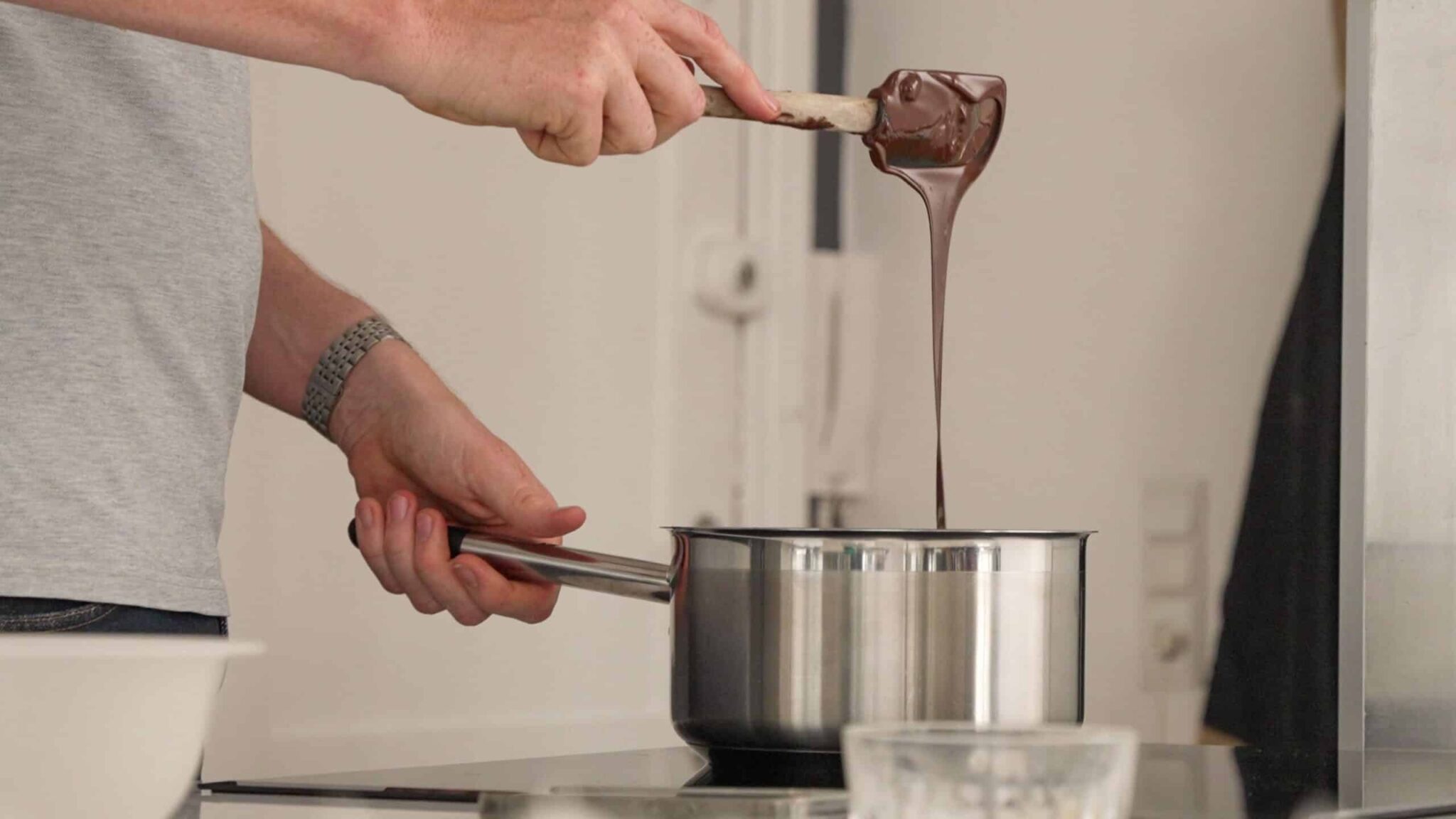
More about Chocolate
If you’re curious to learn more about chocolate, we’ve gathered additional knowledge here.
How should I store chocolate for optimal freshness?

Chocolate should be stored in a cool, dry place away from direct sunlight. A dark cupboard is a suitable option. Avoid storing it in the refrigerator, as the high humidity can cause the chocolate to develop a white bloom. The ideal temperature for storing chocolate is between 15-18 ºC. Therefore, we recommend keeping it at room temperature in the coolest area of your home.
How do you melt chocolate?

Chocolate should be melted gently to prevent burning. Ztove’s temperature control is perfect for this task. Set the pot to 50 ºC and add the chocolate. The chocolate will melt slowly without overheating. Once melted, you can temper it or use it for chocolate mousse, brownies, or other desserts.
If you don’t have Ztove, you can melt the chocolate in a microwave or using a double boiler. However, exercise caution with both methods. In the microwave, it’s easy to overheat the chocolate and cause it to burn. Therefore, use short intervals of 10-20 seconds, stirring in between. When melting chocolate using a double boiler, be careful not to let any water come into contact with the chocolate, as it can cause the chocolate to seize and become unusable.
Why are there white spots on my chocolate?

If chocolate is not tempered correctly or is stored at too high a temperature, the cocoa butter can separate from the unstable crystals formed in the chocolate. The cocoa butter will appear as a white or gray layer on the surface of the chocolate. It does not look as nice, but the chocolate is still fine to eat.
What is Ruby chocolate?

Ruby chocolate is a newer variety of chocolate distinguished by its pinkish-red hue and fruity, slightly acidic taste. It was first introduced in 2017 and is made from the ruby cocoa bean, which is a cocoa bean able to undergo the process required to produce ruby chocolate. Ruby chocolate is tempered at the same temperature as dark chocolate, i.e., 31-32 ºC.
What is Gold chocolate?

Gold chocolate has experienced a surge in popularity. However, unlike dark chocolate, milk chocolate, white chocolate, and ruby chocolate, which are distinct types of chocolate, gold chocolate can be best characterized as a flavour variation.
Gold chocolate is essentially a caramelized version of white chocolate. It has a golden colour and a caramel-like taste. To balance its sweetness, a hint of salt is often incorporated into the chocolate. Gold chocolate is tempered at the same temperature as white chocolate, i.e., 27-28 ºC.
What is cocoa butter?

Cocoa butter is a fat extracted from cocoa beans. It has a neutral flavour on its own but plays a vital role in giving chocolate the right consistency, both at room temperature and when it melts in the mouth.
You can find chocolate coating where some of the cocoa butter has been replaced with other vegetable fats, resulting in a different melting point and a different texture when consumed. The pros for this type is that tempering is not required, you only need to melt it gently. However it does not taste as nice as real chocolate.
If you add extra cocoa butter while tempering chocolate, you will achieve a more fluid consistency, which can be advantageous when dipping cookies, chocolate truffles, etc. in the chocolate.
Does chocolate contain gluten?

No, chocolate does not normally contain gluten. However, it may be produced in a factory where gluten-containing raw materials are handled and therefore it can contain traces of gluten. Some chocolates also have added ingredients that contain gluten, e.g. biscuit pieces. Therefore, always check the label of the specific chocolate.









